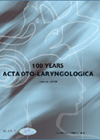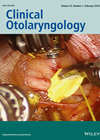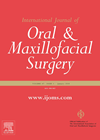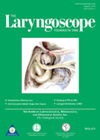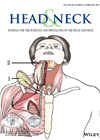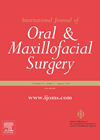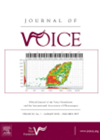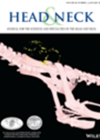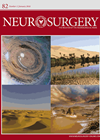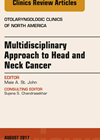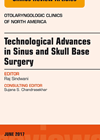
Journal Reviews
Balloon compared to FESS – long-term patient satisfaction
Balloon compared to FESS – long-term patient satisfaction This paper is the first controlled study of balloon sinoplasty’s long-term efficacy, with a follow-up extending over five years. There were 208 patients analysed and 88 recruited. Exclusions were nasal polyps grade...
Synchronous bilateral tonsil cancer
There is a long-standing debate regarding either unilateral or bilateral tonsillectomy for histological confirmation of tonsil cancer. Bilateral tonsillectomy is the standard of care in Denmark for proven or suspected tonsil carcinoma, and in the diagnostic work-up of the unknown...
One anastomosis or two
This is a cumulative meta-analysis from Hong Kong reviewing 27 articles and a total of 7,389 flaps. The authors, at the outset, acknowledge that the number of anastomoses is not the only factor of venous compromise and flap failure. Nonetheless...
Which da Vinci surgical system? Novel flexible, single-port versus current multiport, rigid-arm robotic surgical system
The da Vinci robotic surgical system has transformed how oropharyngeal head and neck surgery can be delivered. The existing da Vinci Si model has challenges: the dimensions of this are larger than would be ideal for head and neck surgery...
What is the evidence for duration of antibiotic prophylaxis in head and neck free-flap cases?
The topic of this systematic review is one which is commonly heard in discussions between microbiologists and head and neck surgeons – what is the evidence for antibiotic prophylaxis in clean-contaminated free-flap cases, and crucially, how long should antibiotics be...
Blindness after orthognathic surgery
This is a case report and review of the literature of this rare, but well recognised alarming complication. The authors discuss the possible mechanisms, suggesting that it does not arise from a direct injury to the optic nerve and is...
Reactive lesions of the contralateral vocal cord – excise or leave?
It is well recognised that benign lesions of one vocal cord can give rise to reactive lesions of the contralateral vocal cord directly opposite to the primary lesion. These contralateral reactive lesions (CRLs) are thought to arise due to impact...
The newest robot from da Vinci – what can it offer for hypopharyngeal cancer surgery?
The standard existing da Vinci surgical robot (the Si model) has been much maligned for not being optimally designed for transoral access and endoscopic manoeuvrability in head and neck surgery. This preclinical work from Holsinger and his team looks at...
Close monitoring of patients for delayed hyponatremia post-transsphenoidal surgery
he incidence of delayed hyponatremia is 16-28% and usually accounts for unplanned readmission of the patient within 30 days after transsphenoidal surgery. One of the surrogate measures of quality of care adopted by the government and regulatory agencies is 30-day...
Advances in surgical innovation for head and neck cancer
This article reviews current advances in surgical treatment of head and neck cancers such as sentinel node biopsy, stereolithic modelling, transoral robotic surgery and intra-operative imaging of tumour margins. Sentinel node biopsy has been found to be especially useful for...
What is the evidence for contralateral tonsillectomy in TORS for known unilateral tonsil malignancy?
The concept of field changes by carcinogens within the upper aerodigestive tract is well established with reported rates of synchronous tumours of 4% and second primaries of 36%. The tonsil in particular has the highest rate of synchronous tumours, postulated...
Stenting and sinus surgery
Stents are used in sinus surgery with the aim of maintaining patency of sinus cavity avoiding restenosis from inflammation or scarring. The exact indication for stenting in sinus surgery however is still debated. The authors discussed the potential role of...

